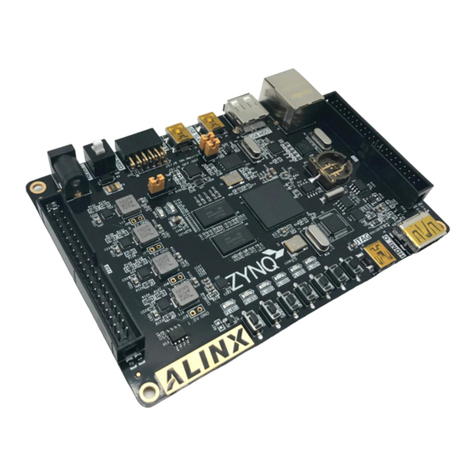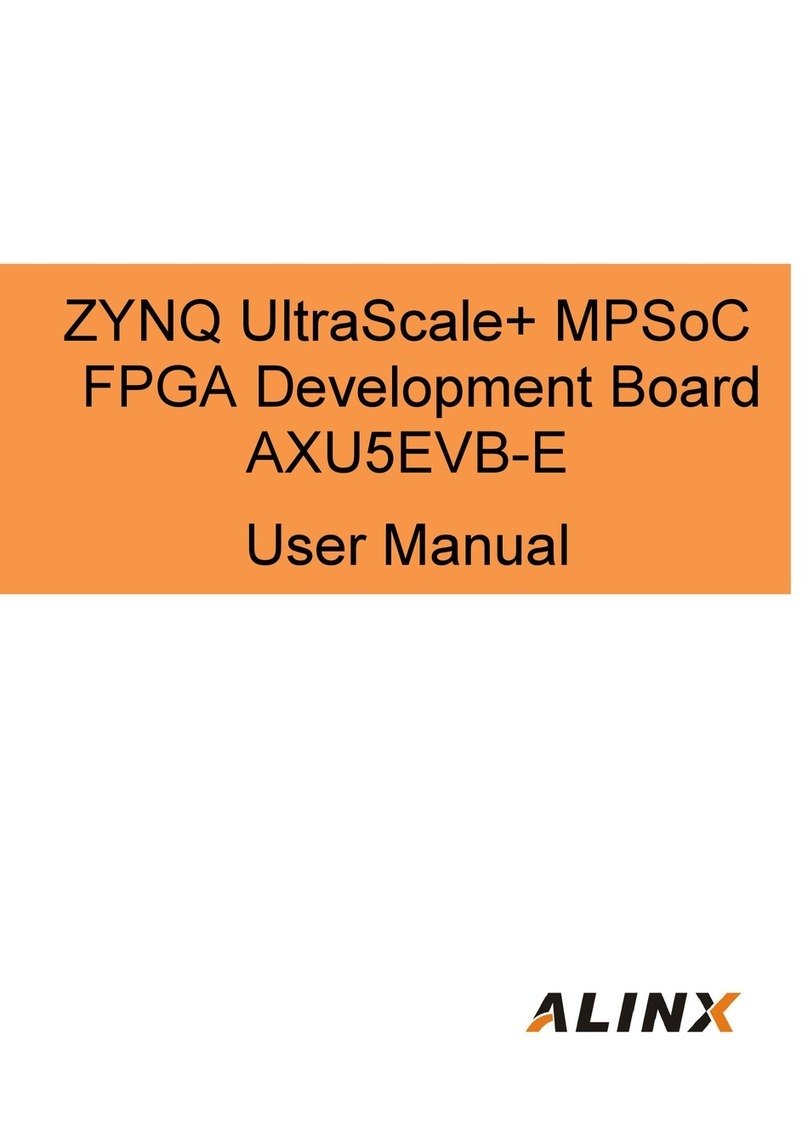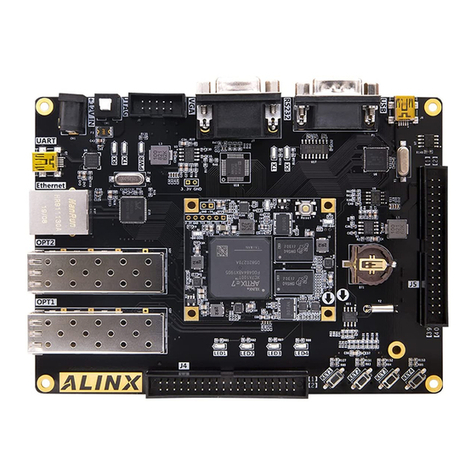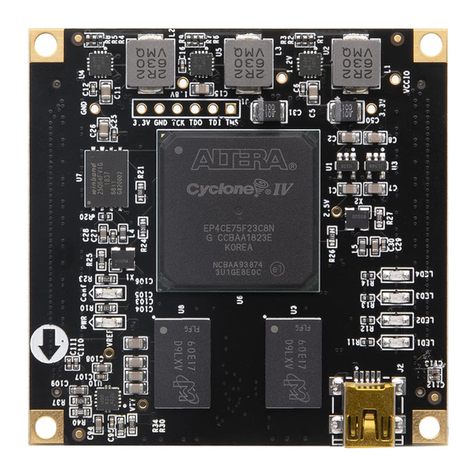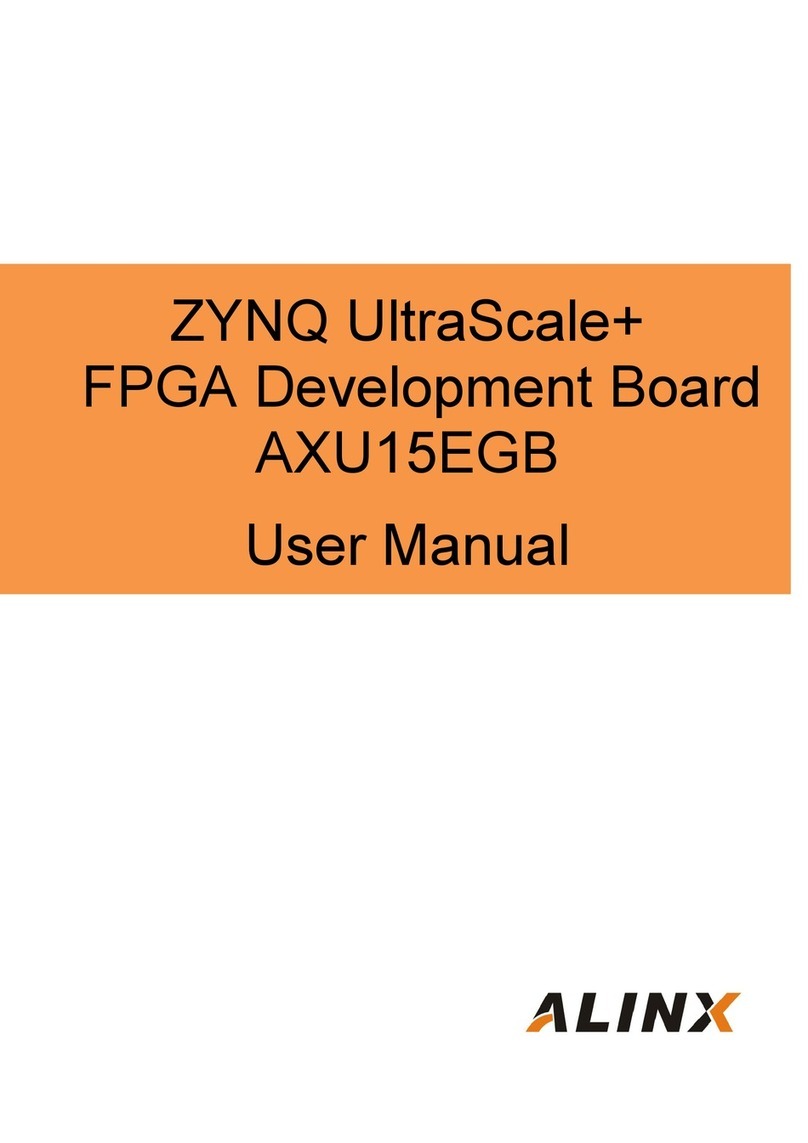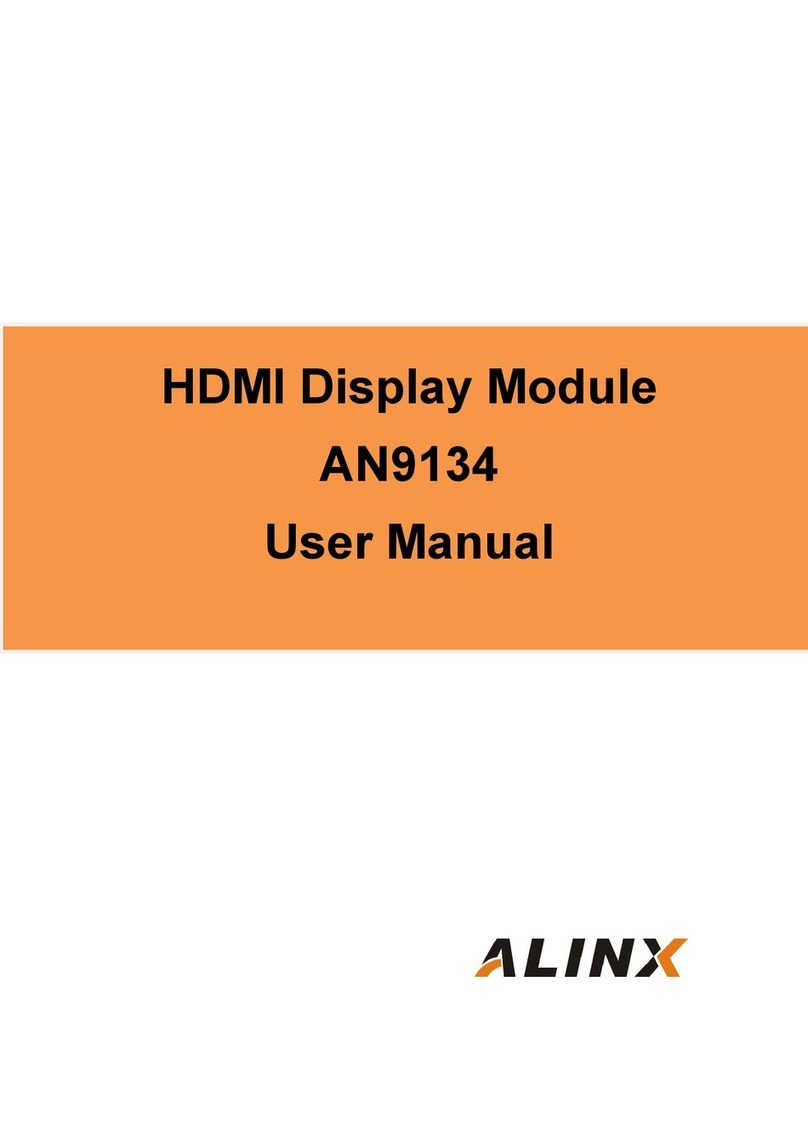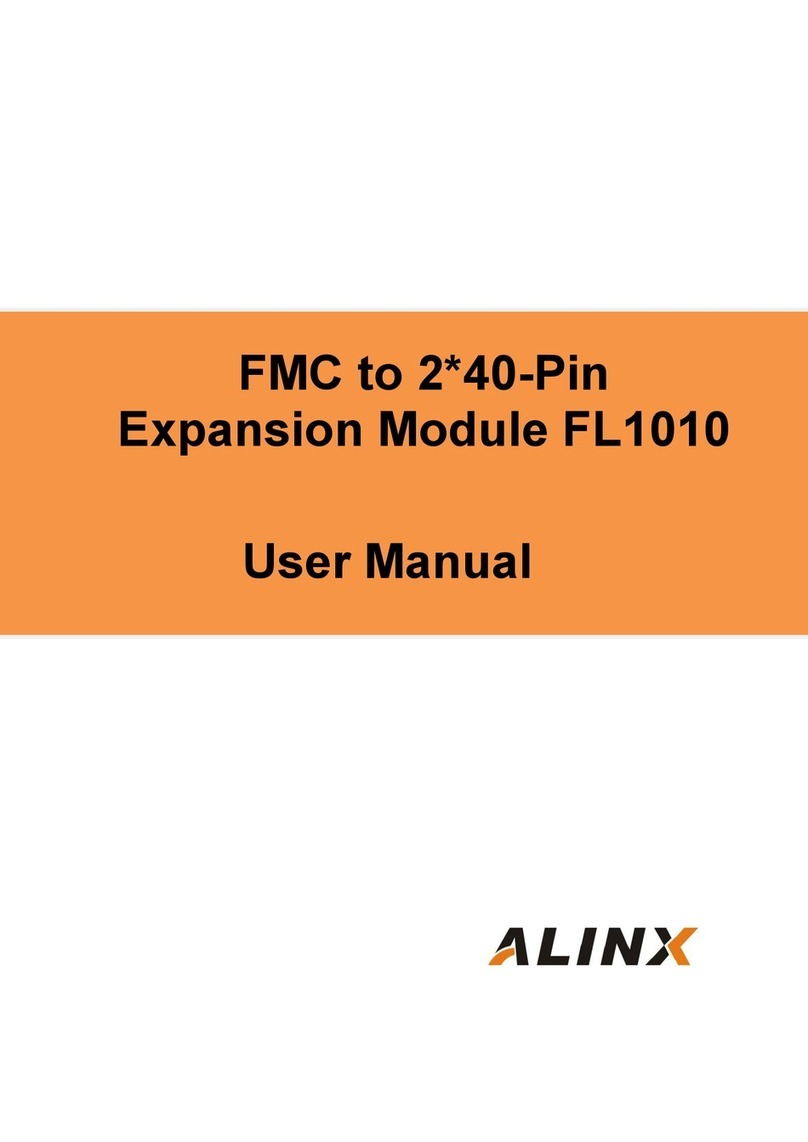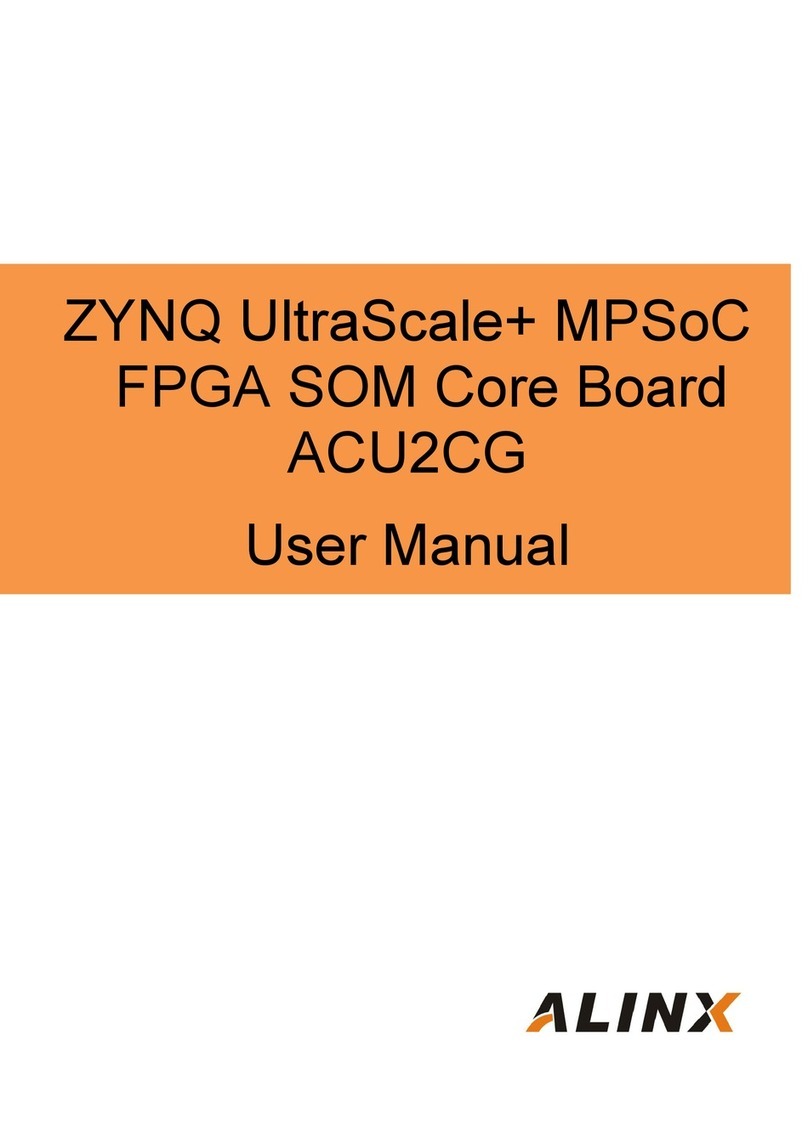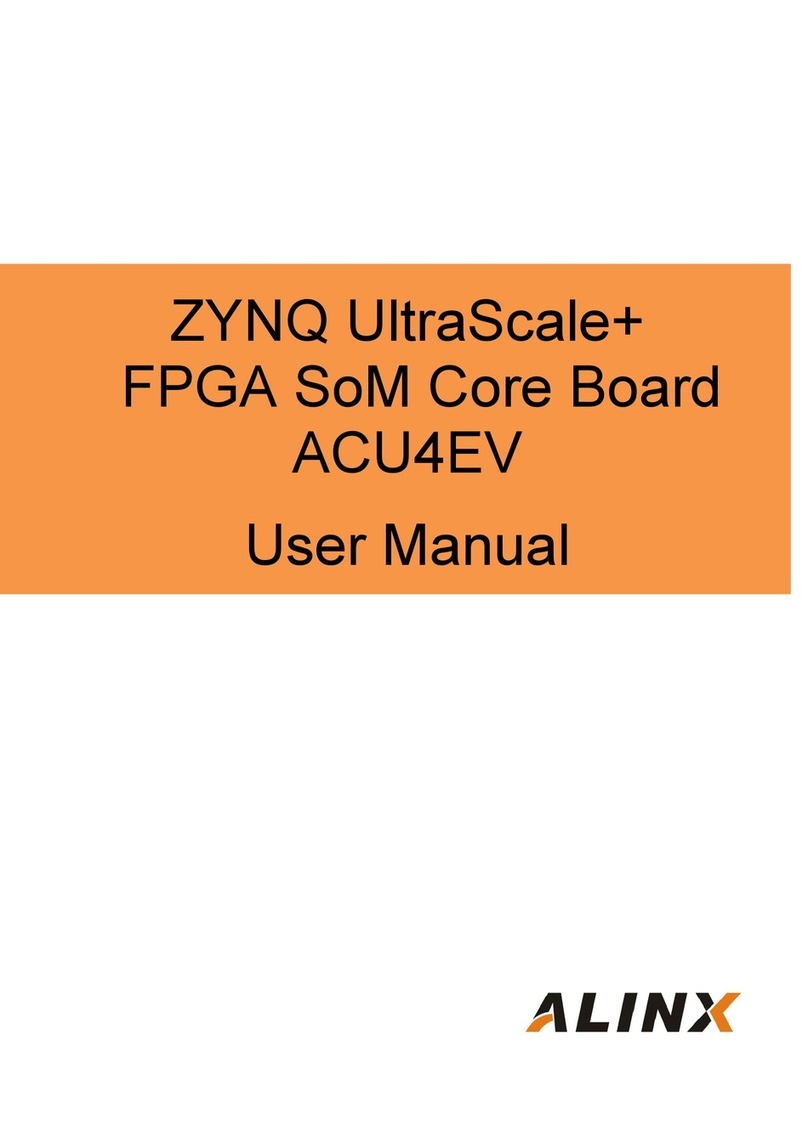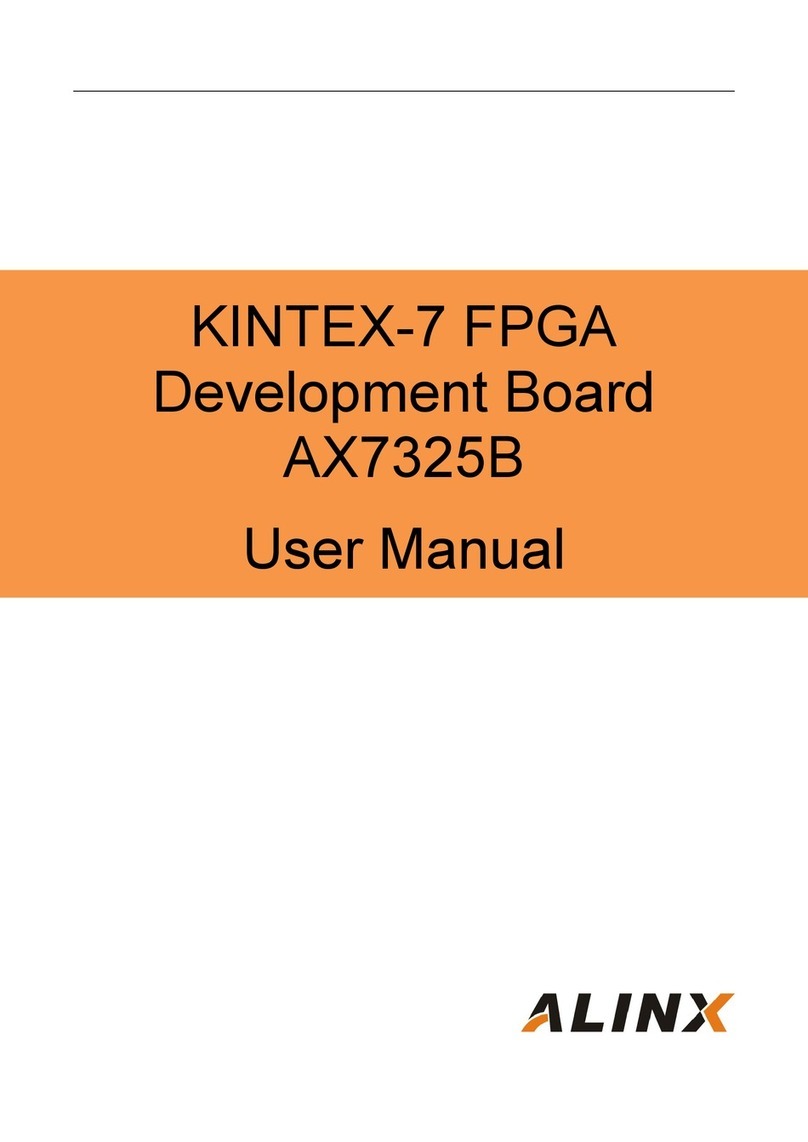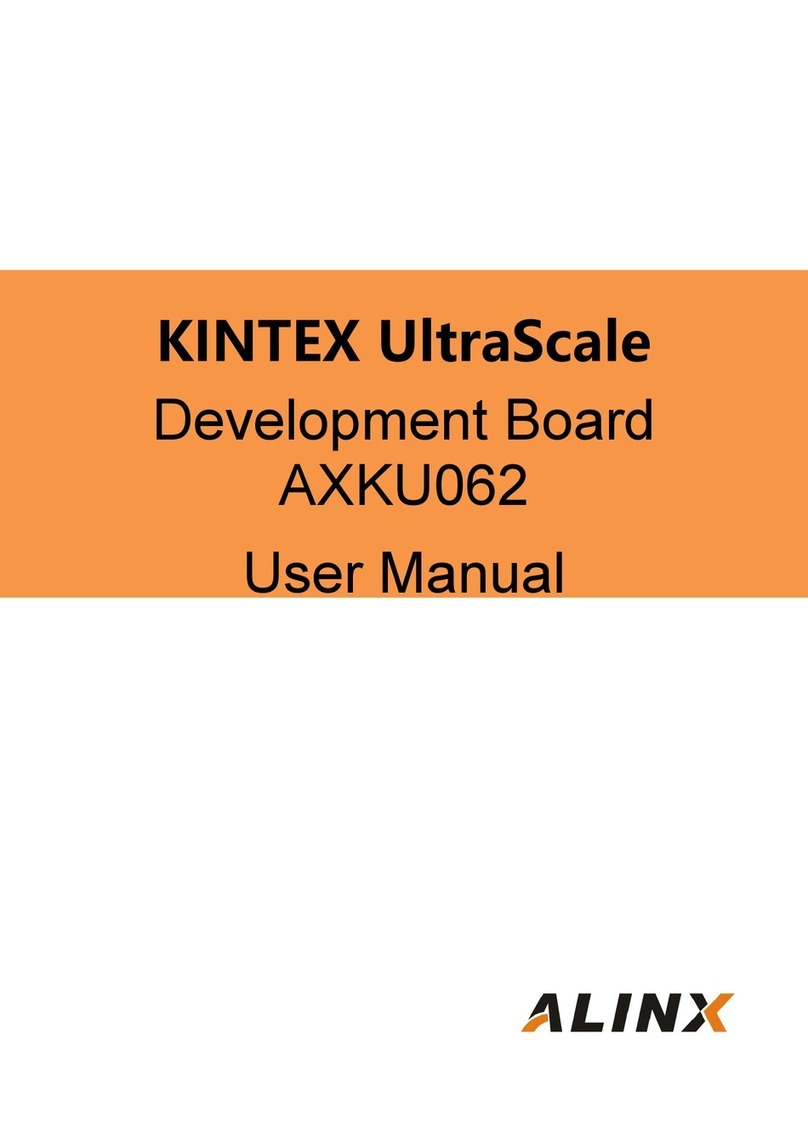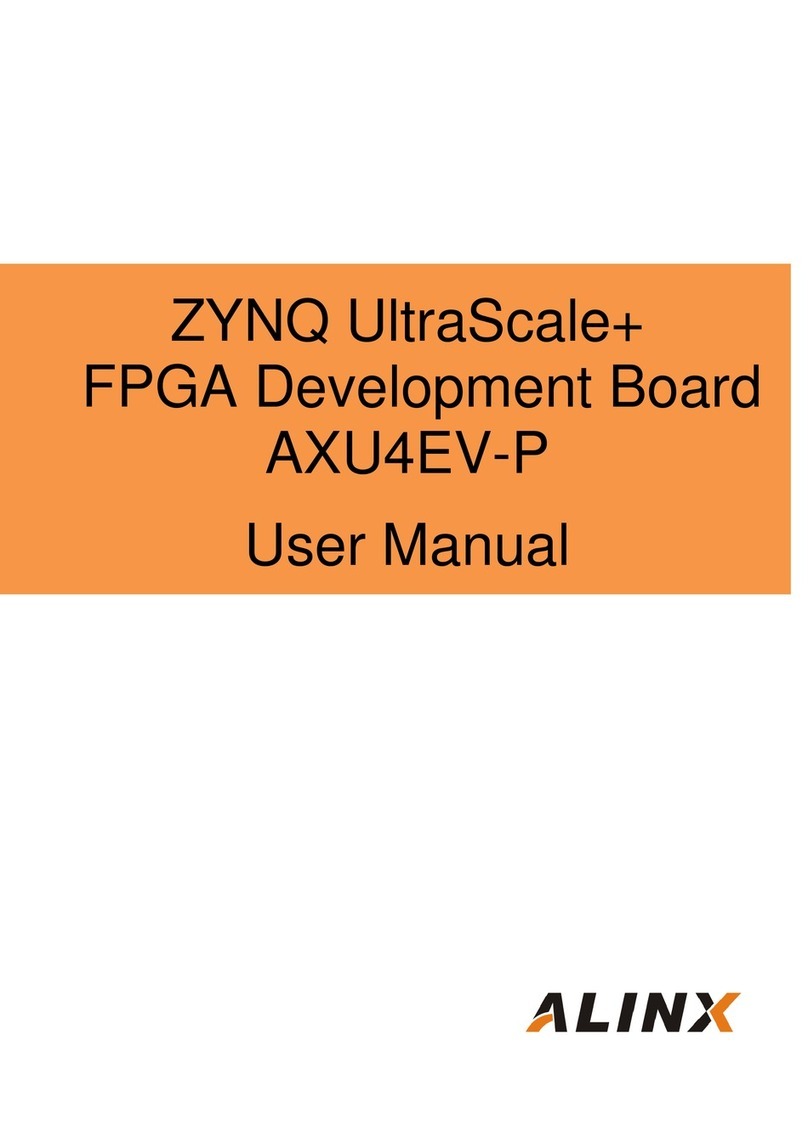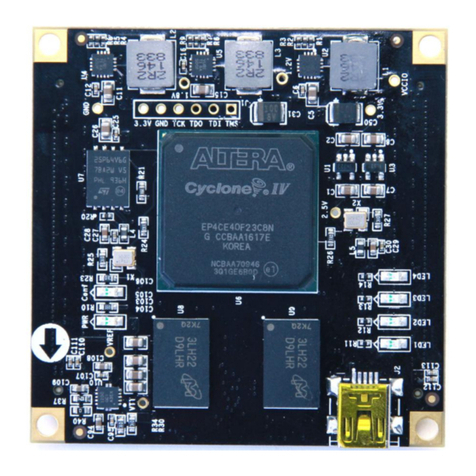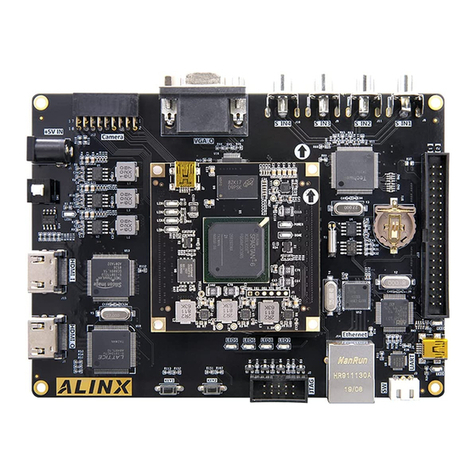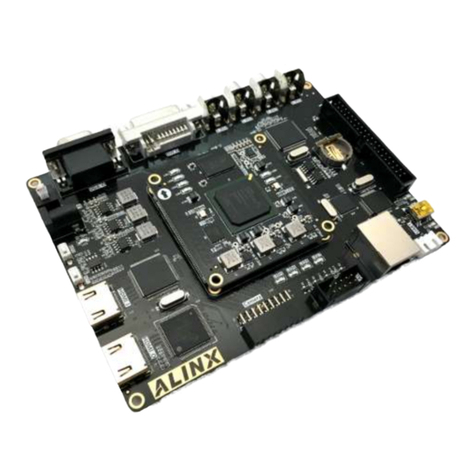
ARTIX-7 FPGA Development Board AX7103 User Manual
Table of Contents
Version Record.......................................................................................................2
Part 1: FPGA Development Board Introduction............................................... 6
Part 2: AC7100B core board................................................................................9
Part 2.1: AC7100B Core Board Introduction............................................ 9
Part 2.2: FPGA Chip....................................................................................11
Part 2.3: Active Differential Crystal...........................................................12
Part 2.4: DDR3 DRAM............................................................................... 15
Part 2.5: QSPI Flash...................................................................................17
Part 2.6: LED Light on Core Board.......................................................... 19
Part 2.7: Reset key......................................................................................19
Part 2.8: JTAG Interface.............................................................................20
Part 2.9: Power Interface on the Core Board.........................................21
Part 2.10: Board to Board Connectors pin assignment........................22
Part 2.11: Power Supply.............................................................................29
Part 2.12: Structure Diagram.................................................................... 31
Part 3: Carrier board........................................................................................... 32
Part 3.1: Carrier board Introduction......................................................... 32
Part 3.2: Gigabit Ethernet Interface......................................................... 33
Part 3.3: PCIe x4 Interface........................................................................ 36
Part 3.4: HDMI output interface................................................................ 38
Part 3.5: HDMI Input interface.................................................................. 40
Part 3.6: SD Card Slot................................................................................42
Part 3.7: USB to Serial Port.......................................................................43
Part 3.8: EEPROM 24LC04.......................................................................45
Part 3.9: Expansion Header...................................................................... 46
Part 3.10: JTAG Interface.......................................................................... 49
Part 3.11: XADC interface (not installed by default)............................. 50
